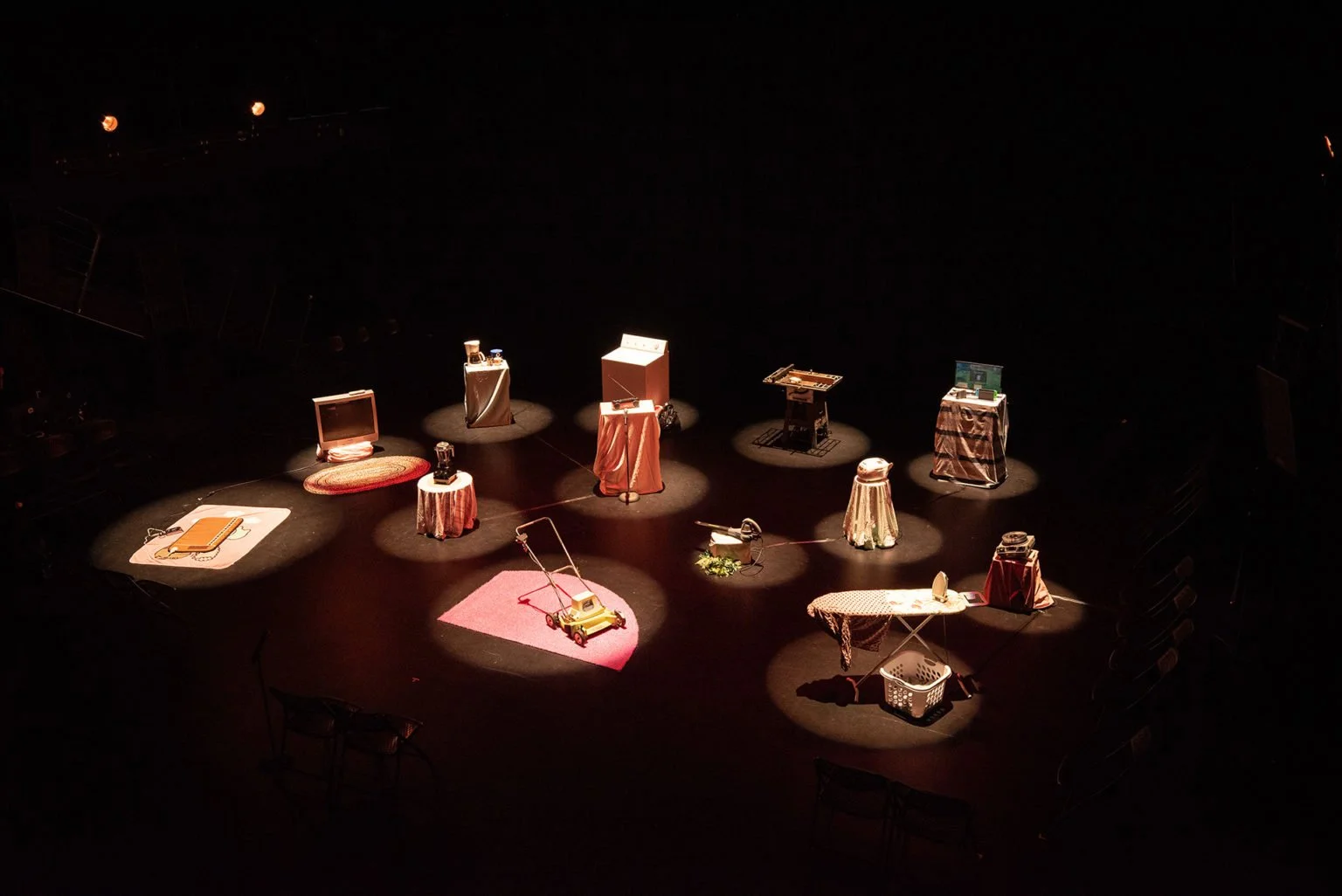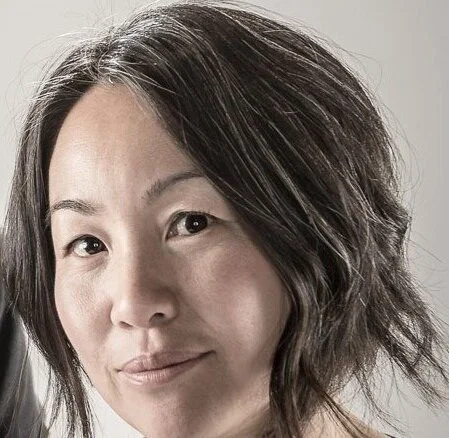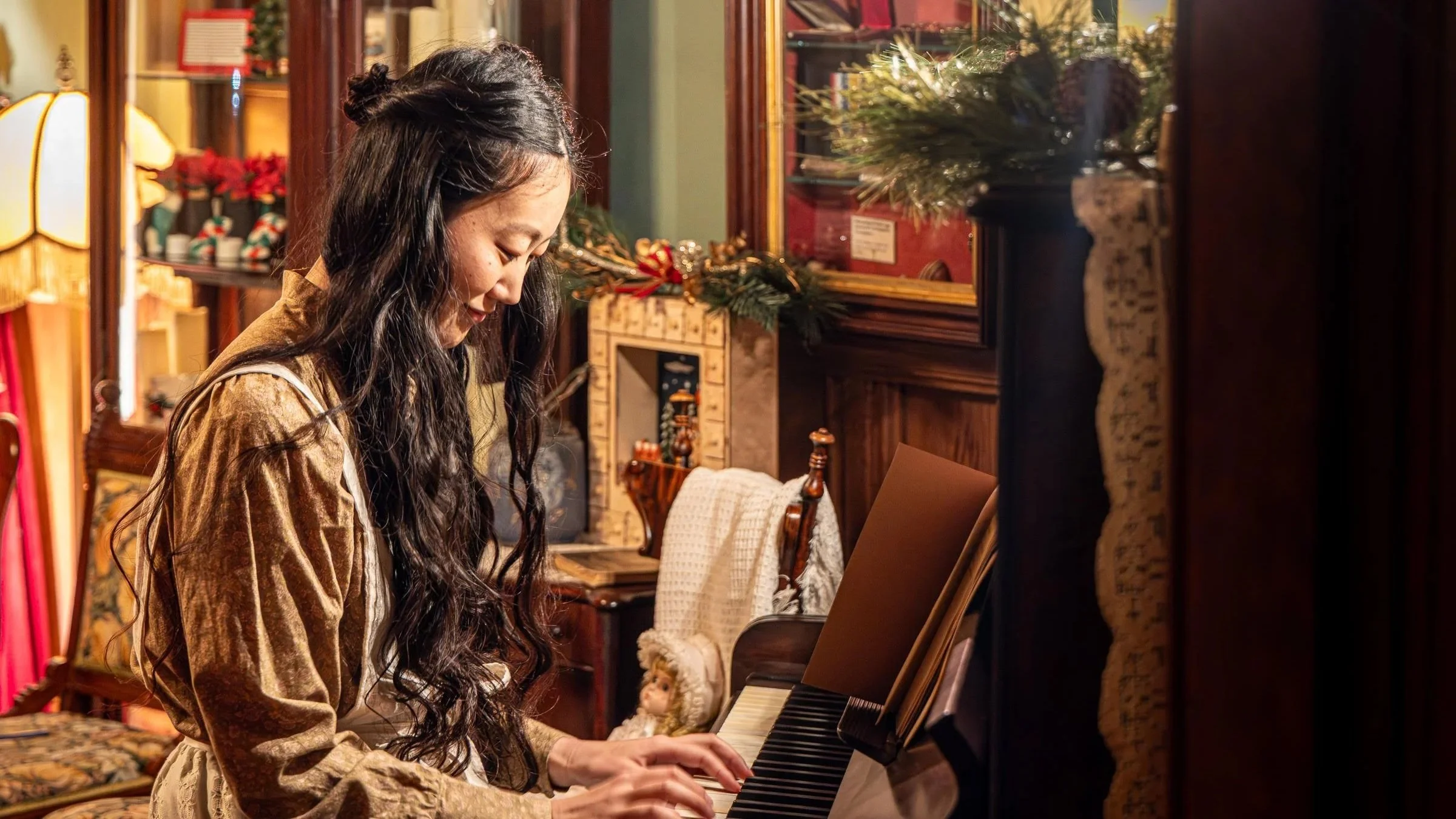Theatre Replacement's Best Life explores our attachment to domestic machines
Creator Maiko Yamamoto drew on family memories of suburbia and concern for the planet in audience-generated new work
An array of home devices await audience members at Best Life. Photo by Chelsey Stuyt Photography
Best Life is at the Shadbolt Centre for the Arts from November 2 to 5
WHAT ARE THE DOMESTIC machines you can’t live without? A coffee maker? A rice cooker? A video-game console? A lawn mower? A boombox?
Those are some of the motorized household contraptions that make their way into Best Life, Theatre Replacement’s interactive, audience-generated new play about living in suburbia, and the devices we leave behind. They were gathered through interviews with local suburbanites about the machines that have become integral—especially as we’ve struggled through a pandemic.
A few of the devices came as a surprise to creator Maiko Yamamoto.
“A Vitamix–I interviewed several people, actually, who said that was a machine they couldn't live without it,” she relates of the juicing appliance. “And then the most unique machine is probably this thing that’s called the BioMat—this crazy heating pad that filters infrared rays through amethyst crystals, and it’s like a healing, soothing experience. So that’s probably the weirdest object that came out of the interviews.”
A boombox becomes the star of the show in Best Life. Photo by Chelsey Stuyt Photography
Also included: A washing machine cited by Yamamoto’s mother, and a table saw mentioned by her father—the objects she calls “sort of the matriarch and patriarch of the show”.
That’s because Best Life traces part of its origins to their story. Yamamoto’s Japanese parents moved to North Burnaby five decades ago, and that’s where she was raised. Despite its proximity to the city, she laughs recalling her first trip downtown wasn’t until she was a teen.
“It was this immigrant kid being plopped into a landscape where my parents felt really foreign,” she explains, adding their specific story is woven into the voice-over narrative that guides audience members through the show. “It was this idea of packing up and moving to a whole new country. And then, during the pandemic, they were feeling quite alienated.”
Another inspiration came from a London International Festival of Theatre residency (LIFT’s Concept Touring Digital Residency) geared toward works that tour the world with as little climate footprint as possible—in other words, with no human travel. In Yamamoto’s vision, the audience-generated Best Life could feature a curated selection of domestic machines that suit each locale.
Maiko Yamamoto
That climate-conscious perspective also played into Yamamoto’s research for the work, when she became fascinated with the fact that rice cookers, boomboxes, and computers would long outlast the people who used them on Earth.
“These machines will be on this planet for thousands of years because of the materiality of them,” she says. “For example, the glass of your cellphone will be around for 5,000 years; the rest of the parts of your phone will probably be around for 2,000 or 3,000 years. We are faced with this now because of what's going on: we’re in a climate emergency.”
Yamamoto adds she’s also had a long-standing desire to create a show where the audience performs for each other.
“So those concepts all created a sort of chemistry experiment in my brain!” says the artist, whose innovators won her and Theatre Replacement co-artistic director James Long the national Siminovitch Prize in 2019. “So we've come up with this piece that I would call a relational, participatory, and immersive piece of performance, where the audience performs the show for each other through a series of guided instructions.”
Yamamoto stresses a strong team of collaborators has helped bring the immersive show to life, including soundscape artist Anton Bedard, lighting designer Itai Erdal, visual artist Keely O’Brien, theatre artist Arthi Chandra also collaborated.
At the show’s Shadbolt Centre debut, intimate audiences of 30 will be guided by gentle instructions through the show, she explains, and a voiceover will “sneak in” the story of her parents. The boombox, she hints, will take a starring role, as the machines, situated around the space, become not just characters, but holders of memories and caring companions to audience members.
But from there, Yamamoto wants to keep an element of surprise to a production that’s about discovery.
“It’s not just an installation; you're going through it with guidance,” she hints. “We do go back into the past, but then we get flung into the deep, deep future as well.” A distant future where many of your domestic machines live on.











